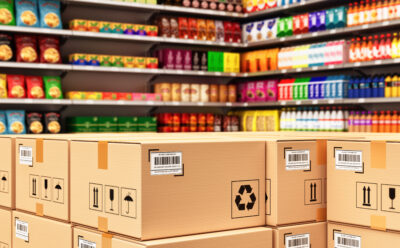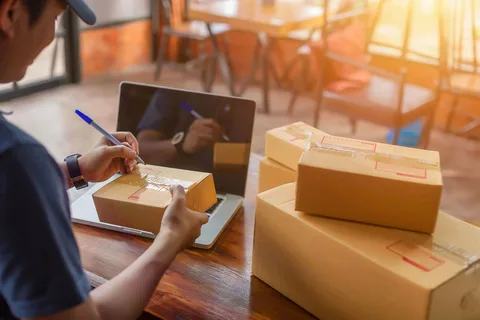Boxed packaged goods have become more than just a means of transporting and storing products. In today’s visually driven, convenience-focused market,
Boxed packaged goods have become more than just a means of transporting and storing products. In today’s visually driven, convenience-focused market, they serve as one of the most influential tools in shaping how consumers perceive, interact with, and remember a product. From psychological influence to practical design, the box your product comes in can be the difference between a one-time sale and a loyal customer.
In this article, we explore how boxed packaged goods influence consumer behavior, what makes for effective packaging design, how leading brands use boxes strategically, and what the future holds for this evolving packaging format.
Must visit: trustedhealthcare

Understanding the Consumer Psychology of Packaging
At its core, packaging affects how consumers feel about a product—often before they even touch it. When done right, boxed packaging taps into subconscious cues that influence trust, value, and emotional connection.
1. First Impressions Matter
Psychologists agree that people form opinions in less than 7 seconds. In retail or e-commerce, your box is often the first thing a customer sees. It communicates brand identity, product value, and even company ethics.
2. The “Perceived Value” Effect
Studies have shown that consumers often associate heavier, sturdier packaging with higher-quality products. A rigid box feels premium, while a flimsy one might lead customers to question the value of the product inside.
3. Color Psychology
Colors used on boxes can trigger specific emotional responses:
- Blue: Trust and professionalism
- Red: Urgency and excitement
- Green: Eco-friendliness or health
- Black: Luxury and sophistication
- White: Cleanliness and minimalism
4. Unboxing and Dopamine
The rise of “unboxing videos” on platforms like YouTube and TikTok speaks to a deeper truth: people get real pleasure from opening well-designed packages. A memorable unboxing can create positive associations and lead to repeat purchases or word-of-mouth marketing.
Key Design Principles for Effective Boxed Packaging
When designing boxed packaged goods, brands must consider much more than just aesthetics. Packaging design is both an art and a science.
1. Clarity and Simplicity
The best packaging communicates clearly what the product is and why it matters. Avoid overcrowding the box with too much text or confusing imagery.
2. Brand Consistency
All elements of the box—color scheme, typography, logos, and even tone of voice—should align with the brand’s identity and core values.
3. Functionality
A box must be easy to open, close, and store. Tamper-evident features, resealable designs, and ergonomic shapes improve the user experience.
4. Material Selection
Choose materials that match the product’s price point and industry expectations. For example, a luxury watch requires a hard shell or velvet-lined box, while organic tea may benefit from a recycled kraft paper box.
5. Eco-Friendliness
Using recyclable or compostable materials is not just good for the planet—it’s also good for your brand image. Customers increasingly factor sustainability into purchasing decisions.
The Strategic Use of Boxed Packaged Goods in Marketing
Packaging isn’t just a container—it’s a marketing tool that sits at the intersection of advertising, branding, and customer experience.
1. Point-of-Sale Impact
At retail locations, a striking box can grab attention from several feet away. This visual attraction often leads to impulse purchases, especially when placed near checkout counters.
2. Social Media and Shareability
An Instagrammable box design encourages customers to share their purchases online. Creative, photogenic packaging turns customers into brand advocates—essentially offering free advertising.
3. Personalization
In the age of data-driven marketing, many brands are adding personalized elements to boxed packaging. This could include custom-printed names, thank-you notes, or QR codes with personalized messages or offers.
4. Subscription Services
Brands offering monthly deliveries (like grooming kits, meal plans, or beauty boxes) rely heavily on boxes to create recurring emotional engagement. Each box becomes a branded experience rather than just a shipment.
Case Studies: Boxed Packaged Goods in Action
Let’s take a closer look at how some top brands use boxed packaging to stand out and succeed:
1. Apple
Apple’s packaging is minimal, clean, and iconic. Each element is designed with intention—from the slow, friction-based opening of the iPhone box to the crisp layout of accessories inside. This packaging strategy reinforces Apple’s premium positioning.
2. Glossier
This cosmetics brand built a cult following partly because of its packaging. Every boxed order comes with fun stickers, bubble wrap pouches, and a millennial pink aesthetic—perfect for social sharing.
3. HelloFresh
As a meal delivery service, HelloFresh’s boxes are functional and insulated—but they also feature fresh, friendly designs and messaging that emphasize health, convenience, and sustainability.
4. Nike (Special Edition Releases)
For special sneaker drops, Nike uses bold and innovative box designs to create collector’s items. These boxes increase the perceived value and generate buzz before the product is even worn.
Environmental Considerations in Boxed Packaging
Sustainability is no longer a bonus—it’s an expectation. Boxed packaged goods need to align with modern environmental standards.
1. Reduce, Reuse, Recycle
Design boxes that use minimal material while still providing adequate protection. Encourage consumers to reuse boxes (e.g., through creative secondary uses) and make recycling instructions clear and visible.
2. Biodegradable Inks and Coatings
Soy-based inks and water-based adhesives reduce harmful residues and allow the entire package to be compostable.
3. Certifications to Look For
- FSC (Forest Stewardship Council) for responsibly sourced paper
- Cradle to Cradle for safe and circular products
- Carbon Neutral labels for emissions-balanced packaging
4. Consumer Communication
Use the packaging itself to educate your customers about its environmental benefits. Transparency builds trust.
Innovations and the Future of Boxed Packaged Goods
The future of boxed packaging lies in the intersection of technology, sustainability, and personalization.
– Smart Packaging
Boxes embedded with sensors or QR codes that provide live product tracking, digital manuals, or authentication for luxury goods.
– Modular Packaging
Boxes that can adapt or reconfigure depending on product size and quantity, reducing the need for multiple packaging types.
– Digital Twins
Brands are developing digital counterparts of physical packaging that live online—offering consumers an interactive experience post-purchase.
– AI-Powered Design
Using machine learning to analyze customer feedback and create packaging that resonates better with target demographics.
FAQs: Boxed Packaged Goods
1. Why are boxed goods more popular than flexible packaging in some industries?
Boxed goods offer better protection, display opportunities, and perceived value. They’re particularly useful in sectors like electronics, luxury, and subscription services.
2. How can small businesses improve their boxed packaging without high costs?
Use affordable options like kraft paperboard and digital printing. Focus on design elements that communicate your brand clearly, even if the materials are basic.
3. Are all boxed packages recyclable?
Not always. Boxes with glossy lamination, plastic windows, or metallic finishes may not be recyclable in standard facilities. Choosing simpler materials improves recyclability.
4. What’s the difference between corrugated and rigid boxes?
Corrugated boxes are lightweight, strong, and used for shipping. Rigid boxes are more durable and luxurious, often used for premium or gift items.
5. How do I make my packaging eco-friendly?
Start with recycled or biodegradable materials, eliminate unnecessary inserts, and avoid mixed-material components. Offer recycling instructions and partner with green suppliers.
6. Can packaging really influence consumer buying decisions?
Absolutely. According to various retail studies, nearly 70% of consumers say that packaging design directly influences their purchase decisions—especially for new or unknown brands.
7. What is a packaging “unboxing experience”?
This refers to the emotional and tactile experience of opening a product. A well-designed unboxing experience increases perceived product value and encourages sharing on social media.
Conclusion
Boxed packaged goods are no longer just a necessity—they’re a strategic tool that shapes how consumers feel, act, and share. In today’s competitive marketplace, the box you choose for your product may be just as important as the product itself.
From psychological cues and structural integrity to sustainable materials and unboxing appeal, the smartest brands treat boxed packaging as a powerful extension of their identity. As innovations continue and customer expectations evolve, businesses that prioritize thoughtful, sustainable, and beautiful packaging will lead the way.




COMMENTS